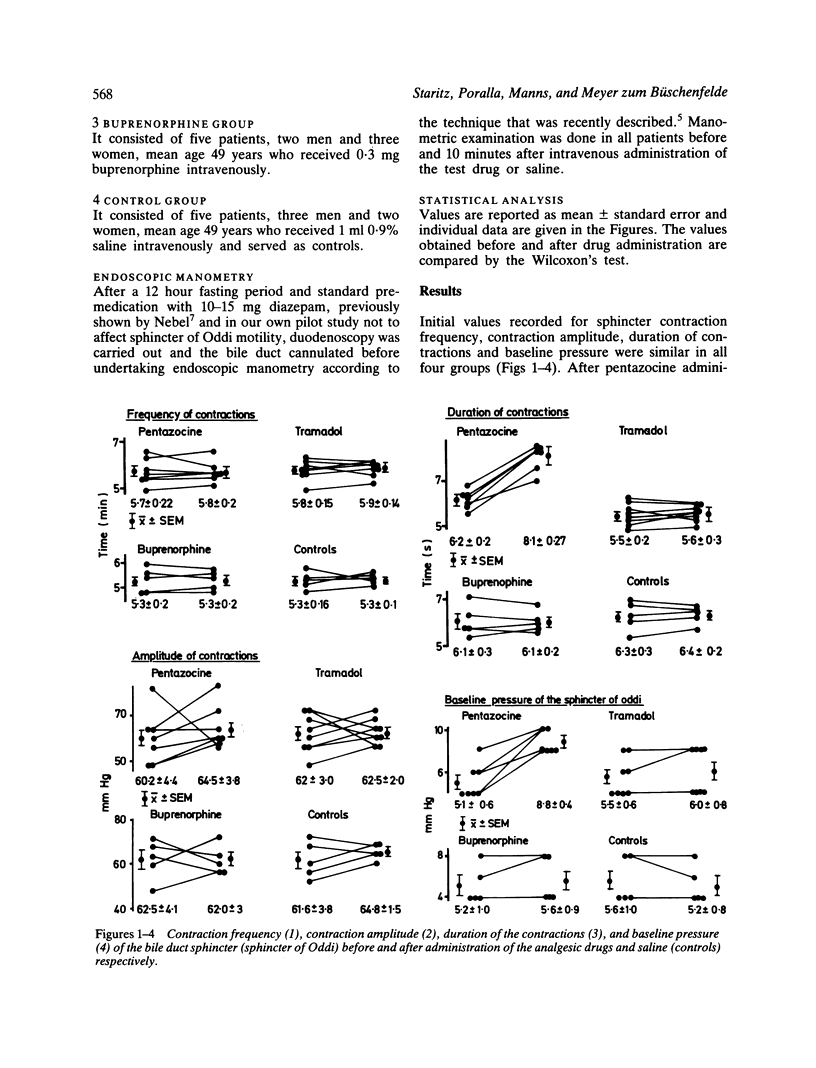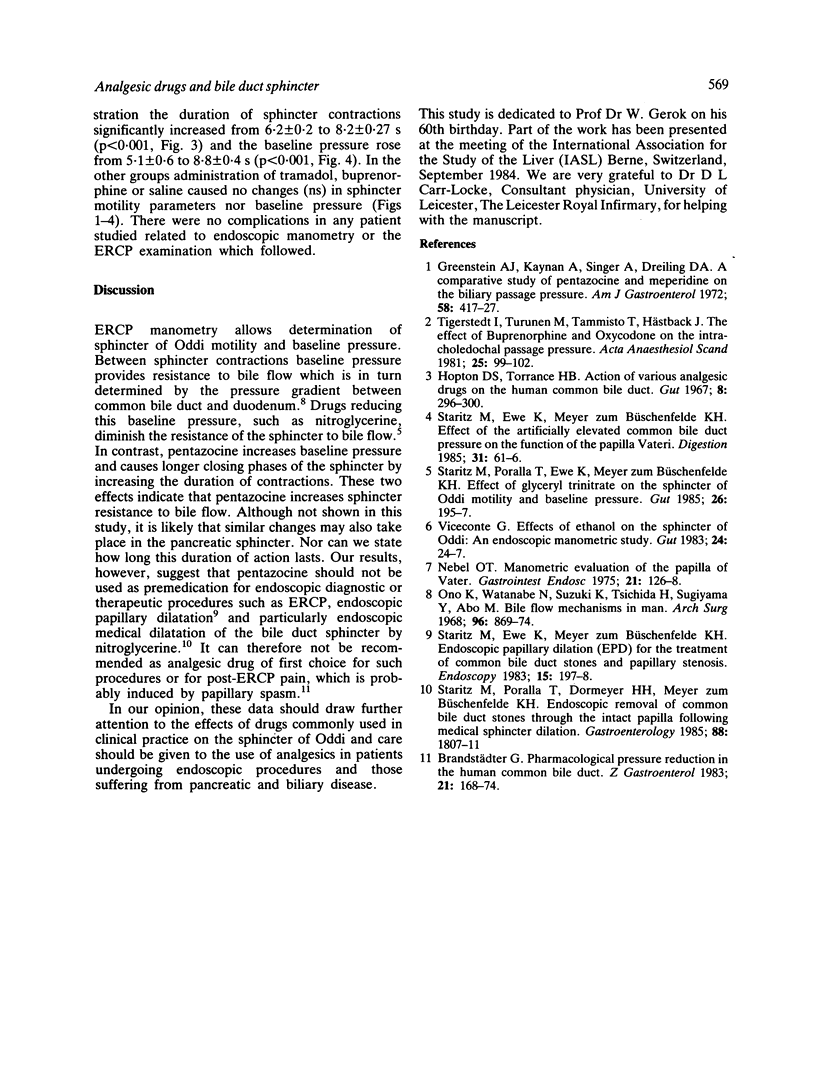Abstract
Modern narcotic analgesic drugs, such as tramadol, pentazocine, and buprenorphine share similarities of molecular structure with morphine which is widely believed to cause spasm of the bile duct sphincter and so impede bile flow. This study assessed the effects of intravenously administered analgesics on bile duct sphincter motor activity measured by ERCP manometry. Ten minutes after pentazocine injection the duration of contractions and baseline pressure of the bile duct sphincter rose from 6.2 +/- 0.2 to 8.2 +/- 0.27 s and from 5.1 +/- 0.6 to 8.8 +/- 0.4 mmHg respectively. Tramadol, buprenorphine and saline showed no such effect. These data indicated that the effects of such drugs on bile duct sphincter function can be safely assessed by ERCP manometry and that pentazocine adversely affects the bile duct sphincter, whilst tramadol and buprenorphine do not. We consider therefore that pentazocine is not the premedication of first choice for endoscopic procedures involving the sphincter of Oddi and should also be avoided in patients with pancreatic and biliary disorders.
Full text
PDF


Selected References
These references are in PubMed. This may not be the complete list of references from this article.
- Brandstätter G. Pharmacological pressure reduction in the human common bile duct. Z Gastroenterol. 1983 Apr;21(4):168–174. [PubMed] [Google Scholar]
- Greenstein A. J., Kaynan A., Singer A., Dreiling D. A. A comparative study of pentazocine and meperidine on the biliary passage pressure. Am J Gastroenterol. 1972 Oct;58(4):417–427. [PubMed] [Google Scholar]
- Hopton D. S., Torrance H. B. Action of various new analgesic drugs on the human common bile duct. Gut. 1967 Jun;8(3):296–300. doi: 10.1136/gut.8.3.296. [DOI] [PMC free article] [PubMed] [Google Scholar]
- Nebel O. T. Manometric evaluation of the papillar of Vater. Gastrointest Endosc. 1975 Feb;21(3):126–128. doi: 10.1016/s0016-5107(75)73819-1. [DOI] [PubMed] [Google Scholar]
- Ono K., Watanabe N., Suzuki K., Tsuchida H., Sugiyama Y., Abo M. Bile flow mechanism in man. Arch Surg. 1968 Jun;96(6):869–874. doi: 10.1001/archsurg.1968.01330240015004. [DOI] [PubMed] [Google Scholar]
- Staritz M., Ewe K., Meyer zum Büschenfelde K. H. Endoscopic papillary dilation (EPD) for the treatment of common bile duct stones and papillary stenosis. Endoscopy. 1983 May;15 (Suppl 1):197–198. doi: 10.1055/s-2007-1021507. [DOI] [PubMed] [Google Scholar]
- Staritz M., Poralla T., Dormeyer H. H., Meyer zum Büschenfelde K. H. Endoscopic removal of common bile duct stones through the intact papilla after medical sphincter dilation. Gastroenterology. 1985 Jun;88(6):1807–1811. doi: 10.1016/0016-5085(85)90004-6. [DOI] [PubMed] [Google Scholar]
- Tigerstedt I., Turunen M., Tammisto T., Hästbacka J. The effect of buprenorphine and oxycodone on the intracholedochal passage pressure. Acta Anaesthesiol Scand. 1981 Apr;25(2):99–102. doi: 10.1111/j.1399-6576.1981.tb01617.x. [DOI] [PubMed] [Google Scholar]


